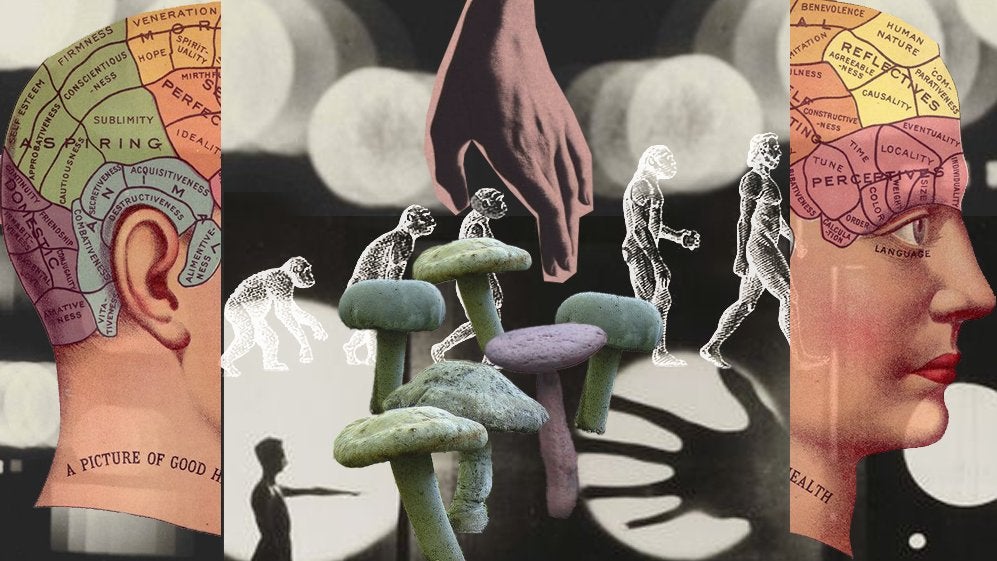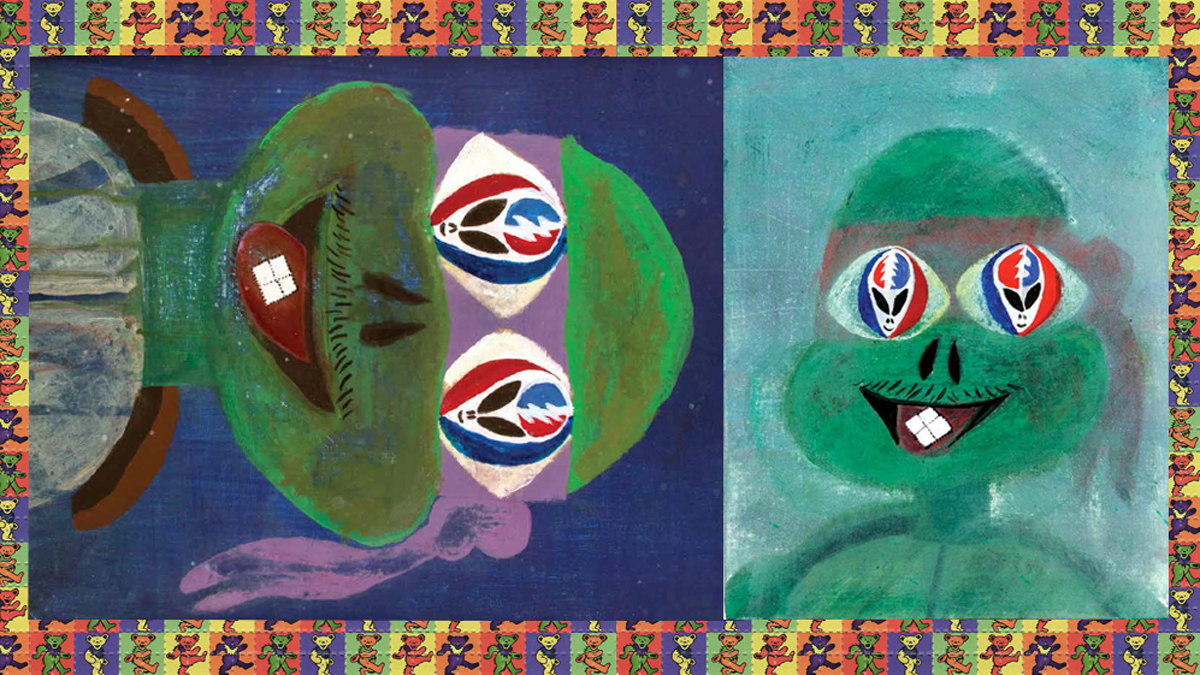One man’s theory on magic mushrooms role in our evolution
Consciousness is humanity’s defining characteristic. The thing that distinguishes us (we think) from other animals. It’s possible we’re the only conscious beings in this universe.
And yet, despite the fundamental role consciousness plays in the human experience, we know almost nothing about it. Not how it works, how it started, or where it may be going.
Theories on the origins of consciousness abound. Some are rigorously scientific. Others look to spiritual explanations. Many mix elements of both.
One prominent theorist argued that psychedelic plants played a key role in the rise of consciousness. His name was Terence McKenna and his idea is known today as the Stoned Ape Theory.
McKenna’s Theory
Like those of many of his peers, McKenna’s ideas combined science with spirituality. He hypothesized that consciousness may have been influenced by, or even completely born from, early hominids’ encounters with psilocybin mushrooms and similar natural psychedelics.
Although he began this line of thinking as early as the 1960s, McKenna enshrined them in his 1992 book Food of the Gods. With its examination of prehistory, the Stoned Ape theory remains rooted in science. But with its inclusion of psychedelics, it weaves in the metaphysical, too. It’s worth noting that the “Stoned Ape” moniker was one McKenna came to hate, a nickname coined by detractors to dismiss his ideas.
Intuitively, his theory feels plausible. As anyone who’s taken psychedelics knows, they exert powerful effects on consciousness, often profoundly so. It hardly seems an unreasonable leap to connect psychedelics with the blooming of consciousness.
But what exactly is consciousness, and where did it come from? That question hinges on a mystery that has always puzzled scientists: starting around 100,000 years ago the human brain rapidly tripled in size, and nobody knows why.
A growth spurt of consciousness
So what was happening back then? Well, humans were moving houses.
The climate was changing. As regions warmed and dried, forests gave way to grasslands. Hominids descended from trees and began ranging these new open spaces, expanding their territory from Africa into Asia and Europe. Groups of humans attached themselves to roving herds of cattle, a consistent source of food which they would domesticate over the next few millennia.
It was during this period that humans may have first encountered psychedelic mushrooms, which grow well on cattle droppings. The effects of eating these mushrooms, McKenna suggests, may have sparked (or accelerated) the leaps in cognition that influenced the development of early technology, speech, artwork, and similar advancements, all of which began to develop rapidly—at least by archaeological standards.
Mushrooms brought more benefits than just an enjoyable trip. In low doses they’ve been seen to increase visual acuity, the ability to see fine detail. This may have improved the hunting abilities of our early ancestors (it’s why some Amazonian hunters still give their hunting hounds small doses of psychedelics to this day).
Of course, not everyone agreed with McKenna’s ideas. The theory was largely derided in the scientific community as simplistic, overly speculative, and naive.
Stoned Ape Through The Ages
In the intervening decades, though, with growing embrace of and research into psychedelic compounds and their benefits, interest in McKenna’s theory has grown. His ideas have increasingly infiltrated the mainstream. Bill Hicks, for one, gives a characteristically entertaining crash course in the Stoned Ape Theory.
As the stigma against them lifts, and more people discover how psychedelic compounds like magic mushrooms can improve their lives, McKenna’s ideas seem more and more plausible.
Consciousness is a mosaic
Did psychedelic compounds single handedly ignite consciousness in our distant ancestors? Probably not.
Consciousness is most likely a result of myriad influences, an amalgamation of nearly infinite and, ultimately, unknowable factors.
One was probably humans’ harnessing fire to cook, which unlocked greater nutrition from our foods and gave our bodies the necessary energy to fuel larger, energy-hungry brains. Another may have been the formation of communities. The cooperative behaviors required by those communities probably accelerated brain growth to navigate more complicated social interactions.
But as time goes on it seems more and more likely that psychedelic compounds may have played a part in our evolution. This fact makes the modern stigmatization of these substances all the more tragic. What might we have lost in the decades we spent burying these compounds? Where might we be now if we had embraced them instead, as our ancestors did?
Terence McKenna is a colossal figure in the psychedelic space, and the Stoned Ape Theory was just one of his numerous contributions. We’ll talk more about him another day, but for now let’s leave it with one of his most influential and compelling notions: did mushrooms lead humans to consciousness?




